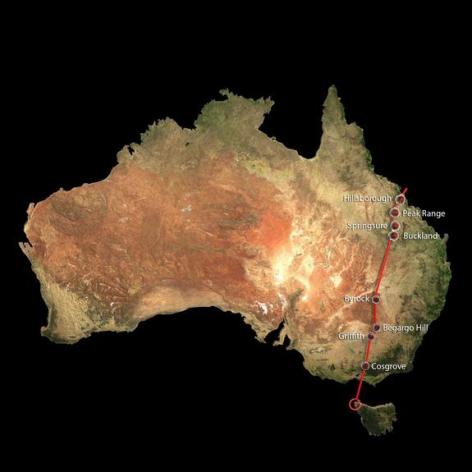
Piece by piece, we are putting together the big geological picture and there is nothing more important that a plume to alter global geology.
That plume likely still exists and is now deep in the ocean awaiting discovery. We certainly have discovered such hot spots that never break sea level.
This should also lead to more mineral discoveries as well as a larger effective model often does. It will certainly eliminate a lot of poor prospects as well.
.
Hidden Superchain of Volcanoes Discovered in Australia
https://ca.news.yahoo.com/hidden-superchain-volcanoes-discovered-australia-185543924.html
Scientists have just found the world's longest chain of volcanoes on a continent, hiding in plain sight.
The newly discovered Australian volcano
chain isn't a complete surprise, though: Geologists have long known of
small, separate chains of volcanic activity on the island continent.
However, new research reveals a hidden hotspot once churned beneath
regions with no signs of surface volcanism, connecting these separate
strings of volcanoes into one megachain.
That 1,240-mile-long (2,000 kilometers) chain of fire spanned most of
eastern Australia, from Hillsborough in the north, where rainforest
meets the Great Barrier Reef, to the island of Tasmania in the south.
"The track is nearly three times the length of the famous Yellowstone
hotspot track on the North American continent," Rhodri Davies, an earth
scientist at Australian National University, said in a statement.
String of volcanoes
Scientists had long known that four separate tracks of past volcanic
activity fringed the eastern portion of Australia, with each showing
distinctive signs of past volcanic activity, from vast lava fields to
fields awash in a volcanic mineral called leucitite that's dark gray to
black in color. Some of these regions were separated by hundreds of
miles, leading geologists to think the areas weren't connected.
But Davies and his colleagues suspected that the Australian volcanism
had a common source: a mantle plume that melted the crust as the
Australian plate inched northward over millions of years. (Whereas many
volcanoes form at the boundaries of tectonic plates, where hot magma seeps up through fissures in the Earth, others form when mantle plumes, or hot jets of magma, at the boundary between the mantle and Earth's core reach the surface.)
To bolster their hypothesis, Davis and his colleagues used the fraction of radioactive argon isotopes
(versions of argon with different atomic weights) to estimate when
volcanic activity first appeared in each of these regions. They combined
this data with past work showing how the Australian plate had moved
over the millennia. From this information, they could estimate where and
when volcanism affected certain regions.
The team found that the same hotspot, likely from a mantle plume, was
responsible for all of the volcanic activity crossing eastern Australia.
The new volcanic chain, which the team dubbed the Cosgrove volcanic
track, was formed between 9 million and 33 million years ago. (None of
the volcanoes on Australia's mainland have been active during the recen
past.)
However, there are large gaps in volcanic activity on the surface of
this track. To understand why, the team modeled the thickness of the
lithosphere, the stiff layer that forms the upper mantle and Earth's
crust.
Plate thickness and melt
It turned out that, at certain spots along the Australian tectonic
plate, the lithosphere was so thick that the mantle plume couldn't
permeate all the way through to create melting the showed up at Earth's
surface. However, at other points, the lithosphere was just barely thin
enough to show the tiniest hints of magma at the surface. One of these
spots is a region of northern New South Wales rich in leucitite, which
contains high concentrations of potassium, thorium and uranium. Surface
volcanism appeared only when the lithosphere was less than 81 miles (130
km) thick, the researchers reported today (Sept. 14) in the journal Nature.
The new finds could help scientists model how mantle plumes interact with the continental crust to create volcanism.
"Now that we know there is a direct relationship between the volume and
chemical composition of magma and the thickness of the continent, we
can go back and interpret the geological record better," study co-author
Ian Campbell, also an earth scientist at Australian National
University, said in the statement.

No comments:
Post a Comment